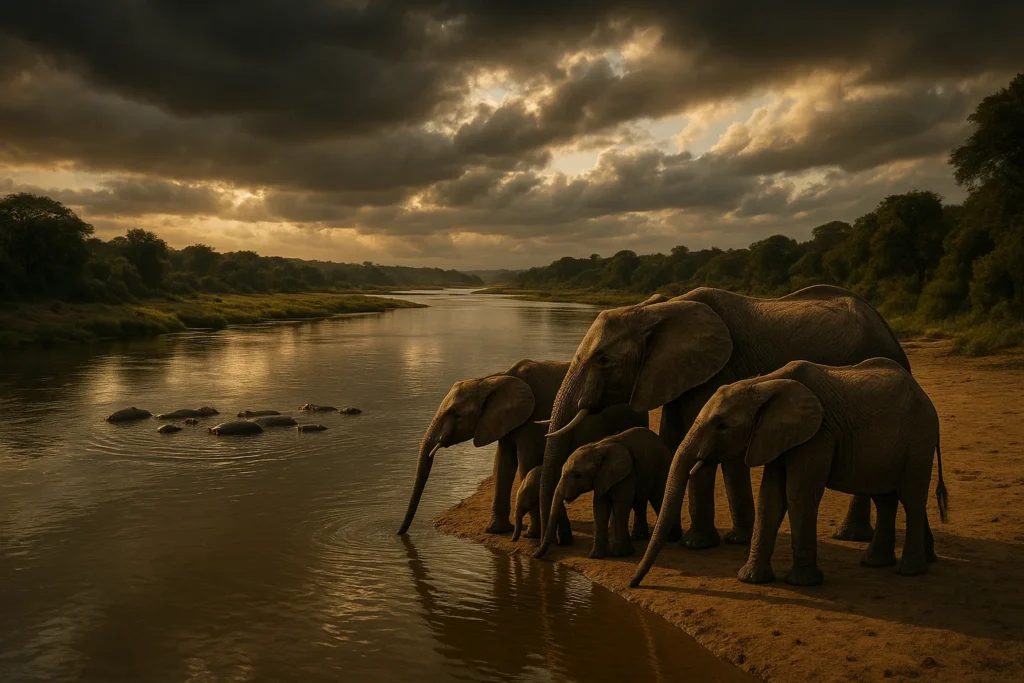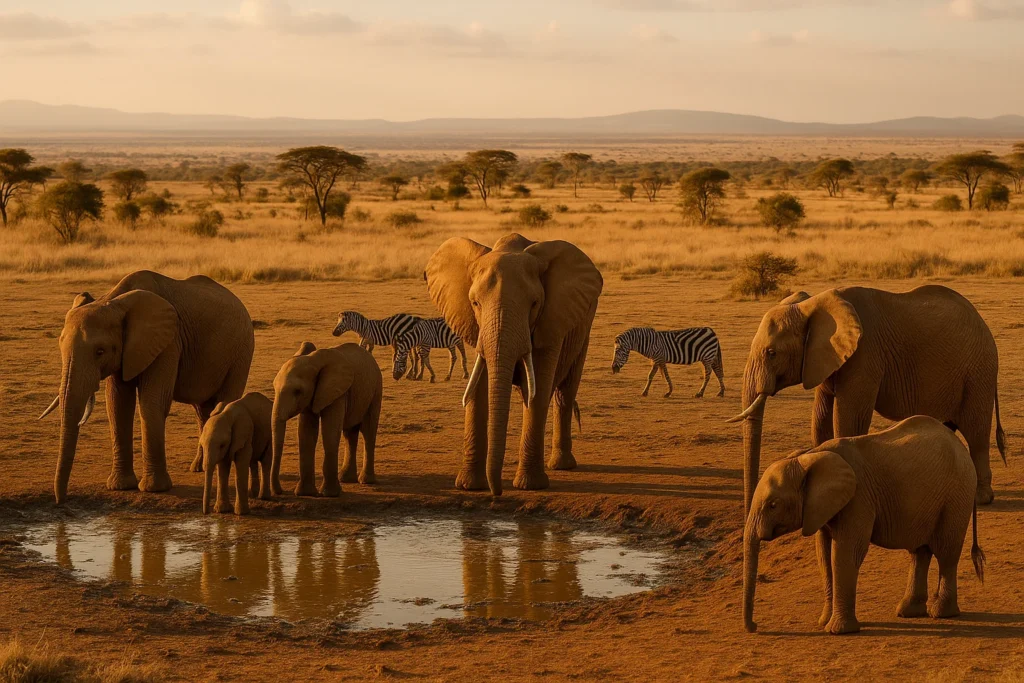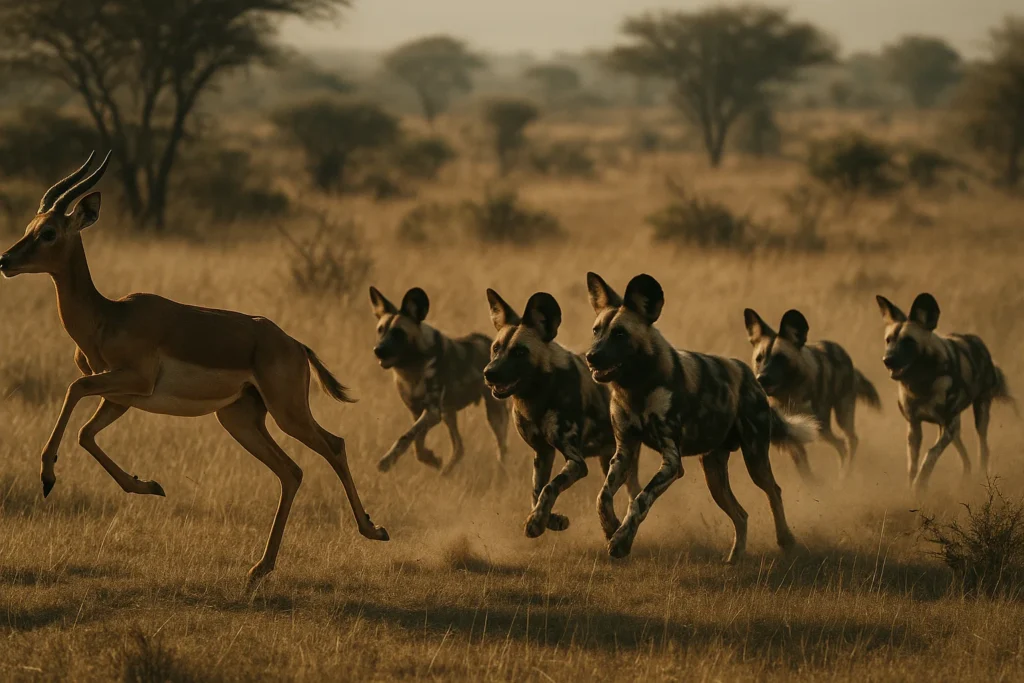Kruger National Park is famous for its Big Five and iconic game drives, but for those willing to wander slightly off the main roads, a quieter, wilder magic awaits along its lesser-known rivers. These hidden waterways are the lifeblood of Kruger’s ecosystems, sustaining a stunning array of wildlife and offering deeply rewarding safari moments far from the crowds.
Why rivers matter in Kruger
Rivers shape Kruger’s biodiversity and animal behaviour. The park’s six major rivers—Crocodile, Sabie, Olifants, Letaba, Luvuvhu, and Limpopo—cut across diverse landscapes, feeding numerous tributaries that form lush, wildlife-rich corridors.
- Water sources: Especially vital during dry season when pans and dams dry up.
- Riparian habitats: Host unique plant and animal species, including riverine forests, floodplains, and oxbow pools.
- Wildlife corridors: Enable migration and predator-prey interaction across park zones.
But it’s the lesser-known rivers and tributaries that offer tranquil sightings, surprise encounters, and deep immersion in Kruger’s wild rhythms.
Top hidden rivers to explore
Letaba River (central Kruger)
Winding through mopane woodland and open sandbanks, Letaba is a quieter alternative to southern hotspots. It attracts elephant herds, buffalo, lion prides, and rich birdlife.
- Best viewing: Mornings and late afternoons when herds drink.
- Top spot: Letaba Rest Camp and surrounding viewpoints.
Luvuvhu River (far north Kruger)
At the park’s remote northern edge, the Luvuvhu cuts through fever tree forests and cliffs, eventually meeting the Limpopo at Crooks Corner.
- Wildlife highlights: Nyala, bushbuck, leopards, and rare birds like Pel’s fishing owl.
- Why go: Fewer vehicles, dramatic landscapes, and top birding.
Timbavati River (central-west Kruger)
Often dry but transforms during rainy season into a lifeline for wildlife. Sightings include white lions (in adjacent reserves), hyenas, giraffe, and elephants.
- Tip: Visit nearby private concessions with access to its upper reaches.
N’wanetsi River (east Kruger near Mozambique border)
This seasonal river runs through grassland and open plains—perfect habitat for cheetahs and grazers.
- Top vantage: Sweni Hide or drives from Satara to Lebombo.
Wildlife along hidden rivers
- Elephants and buffalo: Seen most reliably at river crossings during dry season.
- Hippos and crocodiles: Found in deeper pools, often hidden just beneath the surface.
- Predators: Lions, leopards, and hyenas use riverbanks for ambush or shade.
- Birdlife: Kingfishers, herons, fish eagles, and rarities like the African finfoot.
- Small mammals: Genets, otters, and even servals near lush river fringes.
Tips for river-focused safaris
- Time it right: Visit in the early morning or just before sunset for the best light and animal activity.
- Bring binoculars: Many river species are shy and easier to spot at a distance.
- Explore slowly: Tributaries and small crossings often reveal the most.
- Use camps with river views: Letaba, Olifants, and Pafuri offer great access.
- Ask guides about water levels: Seasonal changes affect wildlife patterns.
Rivers and conservation
While Kruger’s rivers support biodiversity, they’re under pressure from upstream water use, pollution, and climate variability. Some, like the Olifants and Letaba, show signs of ecological stress.
- Invasive species: Aquatic weeds and non-native fish disrupt food chains.
- Sedimentation: Erosion alters habitats, especially for aquatic and semi-aquatic species.
Visitors can help by supporting eco-certified lodges and joining ranger-led conservation walks to learn more about river health.
Conclusion
Kruger’s hidden rivers are where the park breathes—quiet, slow, and full of life. They reveal another layer of safari, one that favours patience, stillness, and attention to detail. Whether it’s elephants silhouetted at sunset on the Letaba or a leopard ghosting through fever trees along the Luvuvhu, these waterways hold the soul of wild Africa.
For more off-the-map safari insights, conservation guides and expert travel tips, continue your journey with WhySafari.com.
FAQs
Letaba and Olifants rivers often attract large herds, especially in the dry season.
Yes. Roads near Letaba, Olifants, and northern Kruger follow riverbanks or offer overlooks.
The Luvuvhu River near Pafuri is a hotspot for rare and migratory birds.
Yes, certain camps offer guided walks near rivers, but only with armed guides.
During peak rains (Jan–Feb), rivers can flood and affect road access. Check with park authorities.
Generally, yes. Especially tributaries and northern rivers like Luvuvhu.






